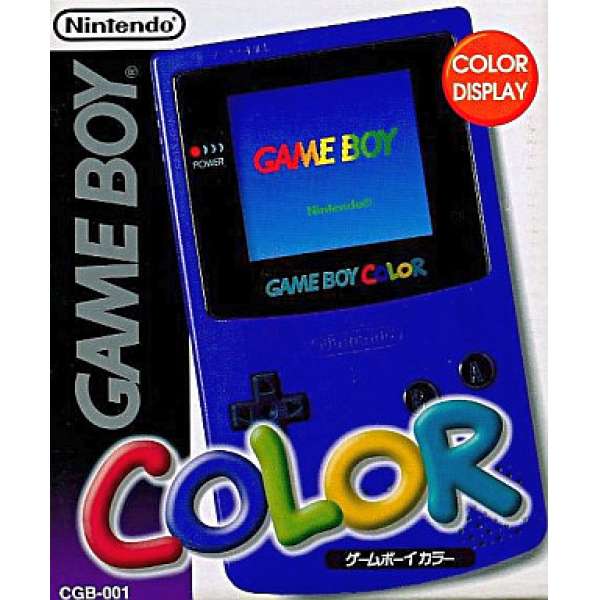經典掌上型主機介紹:銷售破億的任天堂Game Boy
Game Boy是世界上最成功的掌上遊戲機之一,於1989年4月21日在日本首發,隨後在同年7月在北美和1990年9月月在歐洲推出。其後,之後推出多個衍生版本,包括Game Boy Pocket、Game Boy Color和Game Boy Light。直到2003年3月23日才全球停產,作為任天堂的首款便攜式遊戲機,成功開創攜帶式遊戲機市場,對整個行業產生深遠的影響。
採用定制的Sharp LR35902處理器,主頻為4.194304 MHz,內建8KB RAM。顯示屏為2.45英寸反射型LCD,解析度為160x144像素,顯示四階灰度。這款遊戲機使用四顆AA電池供電,續航時間可達10-30小時,這取決於遊戲和使用情況。Game Boy的存儲介質為可拆卸的遊戲卡帶,這使得玩家可以輕鬆更換遊戲。主機初代以灰色外殼,搭配8元CPU及黑白螢幕,背部是卡帶插槽,底部有耳機插孔,遊戲的動作移動則透過十字型鍵。
隨著時間的推移,主機進行多次改進,有透明外殼及不同顏色主機。Game Boy Pocket於1996年推出,是原版Game Boy的精簡版,縮短螢幕且體積更小,重量更輕,使用兩顆AAA電池供電,續航時間仍可達10小時。1998年推出的Game Boy Light增加背光功能,使得在低光環境下也能進行遊戲。Game Boy Color於1998年推出,顯示屏能夠顯示32,768種顏色,並擁有更強的處理能力和更大的內存。
主機的優點在於其堅固耐用的設計、長電池續航時間和豐富多樣的遊戲庫。許多紅白機平台有上市的遊戲,都有推出其Game Boy版本,因此主機的銷售量持續攀升。相比於其他掌上遊戲機,遊戲卡帶價格也相對便宜,並涵蓋各種類型的遊戲。經典作品數不勝數,其中包括《精靈寶可夢》系列、《超級瑪利歐樂園》、《俄羅斯方塊》、《薩爾達傳說:織夢島》和《星之卡比 夢之泉物語》等。這些遊戲不僅展示主機的硬件性能,還創造出豐富的遊戲體驗。而簡單操作設計和攜帶性也使其成為各年齡層玩家的最愛。
然而,主要的缺點是初代Game Boy的顯示屏只有四階灰度,且沒有背光,這使得在低光環境下遊玩較為困難。此外,儘管Game Boy Pocket和Game Boy Color有改善此狀況。主機的銷售在當時取得巨大的成功。自1989年推出以來,該系列在全球的總銷量超過1.18億台,成為最暢銷的掌上遊戲機之一。這些數據凸顯其在全球範圍內的受歡迎程度。
總結來說,Game Boy的出現是掌上遊戲機市場上重要里程碑。其創新的設計和豐富的遊戲內容,使其成為許多玩家心目中的經典主機。無論是評價還是銷售數據方面,任天堂取得巨大的成功,也為後續的Game Boy Advance系列和其他掌上遊戲機奠定堅實的基礎。其次世代主機GBA於2001年上市,主要有32位元的Game Boy Advance、貝殼蓋的Game Boy Advance SP、迷你型的Game Boy Micro,值的一提的是,GB Advance系列都採主機充電,與GB遊戲共容,Game Cube也有推出與Game Boy遊戲共容的主機。盡管如此,但顯示屏的解析度和圖像質量仍然有限,無法與家用遊戲機相比。值到今日但無論是新玩家還是老玩家,都能在Game Boy中找到屬於自己的樂趣和挑戰。
The Game Boy is one of the most successful handheld gaming consoles in the world, first released in Japan on April 21, 1989, followed by releases in North America in July of the same year and in Europe in September 1990. Several derivative versions were released later, including the Game Boy Pocket, Game Boy Color, and Game Boy Light. It was discontinued worldwide on March 23, 2003. As Nintendo's first portable gaming console, it successfully pioneered the handheld gaming market, having a profound impact on the entire industry.
The Game Boy was powered by a custom Sharp LR35902 processor running at 4.194304 MHz and included 8KB of RAM. It featured a 2.45-inch reflective LCD screen with a resolution of 160x144 pixels, displaying four shades of gray. The console was powered by four AA batteries, offering a battery life of 10-30 hours depending on the game and usage conditions. The Game Boy used removable game cartridges, allowing players to easily switch games.
The original console had a gray casing with an 8-bit CPU and a monochrome screen. The back of the console featured a cartridge slot, while the bottom had a headphone jack, and game controls were managed using a cross-shaped D-pad. Over time, the console underwent several revisions, including versions with transparent casings and different colored shells.
The Game Boy Pocket, released in 1996, was a slimmer and lighter version of the original, with a smaller screen and powered by two AAA batteries, still providing up to 10 hours of gameplay. The Game Boy Light, released in 1998, added a backlight feature for playing in low-light conditions. The Game Boy Color, also released in 1998, could display 32,768 colors and had enhanced processing power and memory.
The Game Boy's advantages included its robust and durable design, long battery life, and a rich library of diverse games. Many games released on the Famicom platform had their Game Boy versions, contributing to the console's continually rising sales. Compared to other handheld consoles, Game Boy cartridges were relatively inexpensive and covered a wide range of game genres. Classic titles include the Pokémon series, Super Mario Land, Tetris, The Legend of Zelda: Link's Awakening, and Kirby's Dream Land. These games not only showcased the hardware capabilities of the Game Boy but also provided rich gaming experiences. Its simple design and portability made it a favorite among players of all ages.
However, the main drawback of the original Game Boy was its display, which only showed four shades of gray and lacked a backlight, making it difficult to play in low-light conditions. Although the Game Boy Pocket and Game Boy Color improved on this issue, the display resolution and image quality remained limited compared to home consoles.
The Game Boy achieved enormous commercial success. Since its release in 1989, the series sold over 118 million units worldwide, making it one of the best-selling handheld gaming consoles of all time. These sales figures highlight its global popularity.
In summary, the Game Boy marked a significant milestone in the handheld gaming market. Its innovative design and rich game content made it a classic console in the hearts of many players. In terms of both critical acclaim and sales figures, Nintendo achieved great success, laying a solid foundation for subsequent series such as the Game Boy Advance and other handheld consoles. The next generation, the Game Boy Advance, launched in 2001, featured the 32-bit Game Boy Advance, the clamshell-designed Game Boy Advance SP, and the miniature Game Boy Micro. Notably, the GBA series supported rechargeable batteries and backward compatibility with GB games. Additionally, the GameCube had compatibility with Game Boy games. Despite its limitations in display resolution and image quality, which couldn't match home consoles, the Game Boy remains beloved by both new and old players, offering fun and challenges that endure to this day.
.jpg)

照片:產品官網
- 1
- 2
- 3
- 4
